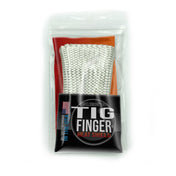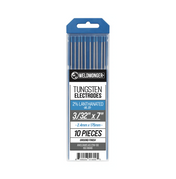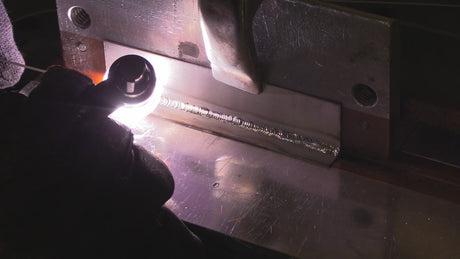Simple welding Metallurgy of 300 Series Stainless Steel
Simple Metallurgy of 300 Series Stainless Steel, for welders and fabricators who want to maintain corrosion resistance and performance in real-world stainless welding jobs:
Keeping Stainless “Stainless”
The 300 series of stainless steels—like 304, 316, and 321—are among the most commonly used stainless materials in fabrication, food service, medical, and chemical applications. But while they’re known for their corrosion resistance and weldability, poor welding practices can ruin those benefits fast.
This article breaks down the essential metallurgy behind 300 series stainless and how to maintain its key properties before, during, and after welding.
What Makes 300 Series Stainless Special?
300 series stainless steels are austenitic. That means:
- They are non-magnetic ( unless cold worked)
- They have excellent corrosion resistance
- They do not harden with heat treatment
- They stay ductile even at low temperatures
These alloys get their corrosion resistance mainly from chromium and nickel—chromium forms a thin oxide layer that protects the metal, and nickel stabilizes the austenitic structure.
The Welding Risk: Losing Corrosion Resistance
When welding, the main concern isn’t strength—it’s maintaining the stainless properties, especially corrosion resistance. Improper welding can lead to:
- Carbide precipitation and Stress corrosion cracking (chromium gets tied up with carbon at grain boundaries)
- Sugaring or oxidation on the root side of the weld
- Contamination from carbon steel tooling or poor filler choices
If you destroy the chromium oxide layer—or deplete the chromium near the weld—you turn “stainless” into just another rust-prone metal.
Why 300 Series Doesn’t Harden from Fast Cooling
Unlike carbon steel, which can form hard and brittle microstructures like martensite when cooled quickly, 300 series stainless is stable austenite. This means:
- Rapid cooling won’t harden it
- You don’t have to worry about quench cracking
- You can weld and air-cool without losing ductility
This also means that preheating isn’t necessary—even on thick sections.
🔥 Why Preheat Is Not Needed for Thick Stainless
Preheating is typically used on carbon steels to:
- Slow cooling and avoid cracking
- Reduce residual stress
- Prevent hydrogen-induced issues
But with 300 series stainless:
- There’s very little hydrogen cracking risk
- Hardening from quick cooling is not a concern
- The alloy remains ductile even when welded cold
So unless you're welding in extremely cold environments (or onto a massive heat sink), preheat is unnecessary—and in fact, too much heat input can cause grain growth or warping.
✨ Electropolishing After Welding: The Secret Weapon

Welding—even with good shielding—can burn off the protective chromium oxide layer and leave behind heat tint, discoloration, and roughness. This makes the weld area:
- More prone to corrosion
- Rougher and harder to clean
- A potential failure point in sanitary or chemical applications
Electropolishing is a process that removes a thin layer from the surface using an electrochemical bath. It does three key things:
- Smooths the surface microscopically, reducing crevices for corrosion or bacteria
- Restores the passive chromium oxide layer, improving corrosion resistance
- Improves appearance, making welds blend seamlessly
➡️ Bonus: Electropolishing reaches areas that brushing or pickling might miss—ideal for sanitary tubing or medical components.
Welding 300 series stainless steel isn’t that hard—but preserving its properties takes discipline. To sum it up:
- Use low heat input and tight arc control
- Avoid contamination from carbon steel or dirty filler
- Skip the preheat—even on thick material
- Follow up with electropolishing or proper post-weld cleaning to restore corrosion resistance
Do it right, and your stainless weld will stay stainless.










